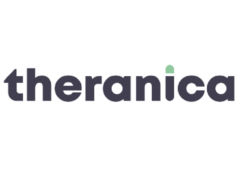 A new peer-reviewed study published in Pain Medicine, examining the use of Nerivio’s (Theranica) guided imagery, education and relaxation (GIER) in-app optional behavioural intervention feature, has demonstrated a positive impact for the acute treatment of migraine.
A new peer-reviewed study published in Pain Medicine, examining the use of Nerivio’s (Theranica) guided imagery, education and relaxation (GIER) in-app optional behavioural intervention feature, has demonstrated a positive impact for the acute treatment of migraine.
The GIER feature is an audio-visual software module of guided imagery, relaxation and education, designed for optional use in conjunction with remote electrical neuromodulation (REN) treatments via Nerivio—a prescribed, therapeutic wearable device to treat pain and other symptoms associated with migraine—according to a Theranica press release.
The 25-minute video, played on the user’s smartphone during REN treatment, comprises three relaxation techniques: diaphragmatic breathing, progressive muscle relaxation, and guided imagery, as well as pain education content on migraine biology and the REN treatments. Patients may watch and/or listen to the video when Nerivio is activated for an acute treatment.
The study examined two matched cohorts of migraine patients. One group used Nerivio, a wearable migraine therapeutic, by itself. The other Nerivio+GIER group supplemented Nerivio treatments with the new GIER feature. Results from the match-controlled, dual-arm study indicate the Nerivio+GIER group had a higher proportion of patients achieving consistent pain relief, consistent improvement in functioning, and consistent return to normal functioning, beyond that of Nerivio treatment alone.
“It is well-established that behavioural interventions such as diaphragmatic breathing, guided imagery and relaxation practices have preventive benefits for people living with migraine,” said the first author of the study, Dawn Buse (Albert Einstein College of Medicine, New York City, USA). “This study helped confirm our hypothesis that these interventions can help during a migraine attack as well. Migraine attacks are typically associated with physical pain and additional debilitating symptoms. Not surprisingly, this combination of symptoms tends to be accompanied by emotional and physical anxiety and distress.
“The natural protective ‘fight or flight’ reaction of the nervous system, while well-intentioned, is actually counterproductive during a migraine attack. Relaxation activities can provide comfort as well as help reduce muscle tension, encourage circulation, and generally moving the body and mind into a more comfortable and relaxed state. Our research demonstrates how expanding the patient’s toolbox with features such as GIER, incorporated into the Nerivio app, can be utilised to enhance the therapeutic benefits of neurostimulation by calming the nervous system—while at the same time addressing the patient’s wellbeing.”
Prospective data from 170 patients, mostly chronic migraine patients (or people with 15 or more days with migraines per month), were analysed (85 per group). Some 79% of the users in the Nerivio+GIER group experienced consistent pain relief (pain relief in at least 50% of the treatments), whereas 57% experienced it in the REN-only group. Seventy-one percent of the users in the Nerivio+GIER group experienced consistent improvement of function (improvement of function in at least 50% of the treatments), compared to 57% in the REN-only group. In addition, 37.5% of the users in the Nerivio+GIER group experienced consistent complete return to full functioning (i.e., in at least 50% of the treatments), compared to 17.5% in the REN-only group. These differences between the groups were statistically significant, the release further notes.
“Our clinical development team at Theranica is dedicated to constantly improving patients’ benefit from Nerivio, and the optional GIER feature is part of that effort,” said Liron Rabani, Theranica’s chief scientist, who co-authored the study. “While REN was proven effective on its own in fighting migraine symptoms, we thought that helping patients relax and enhance wellbeing during a migraine may have an additional therapeutic effect. We are glad to have this study demonstrate the usefulness of biobehavioural-mental-emotional enhancement in relieving pain and helping patients to return to function.”













